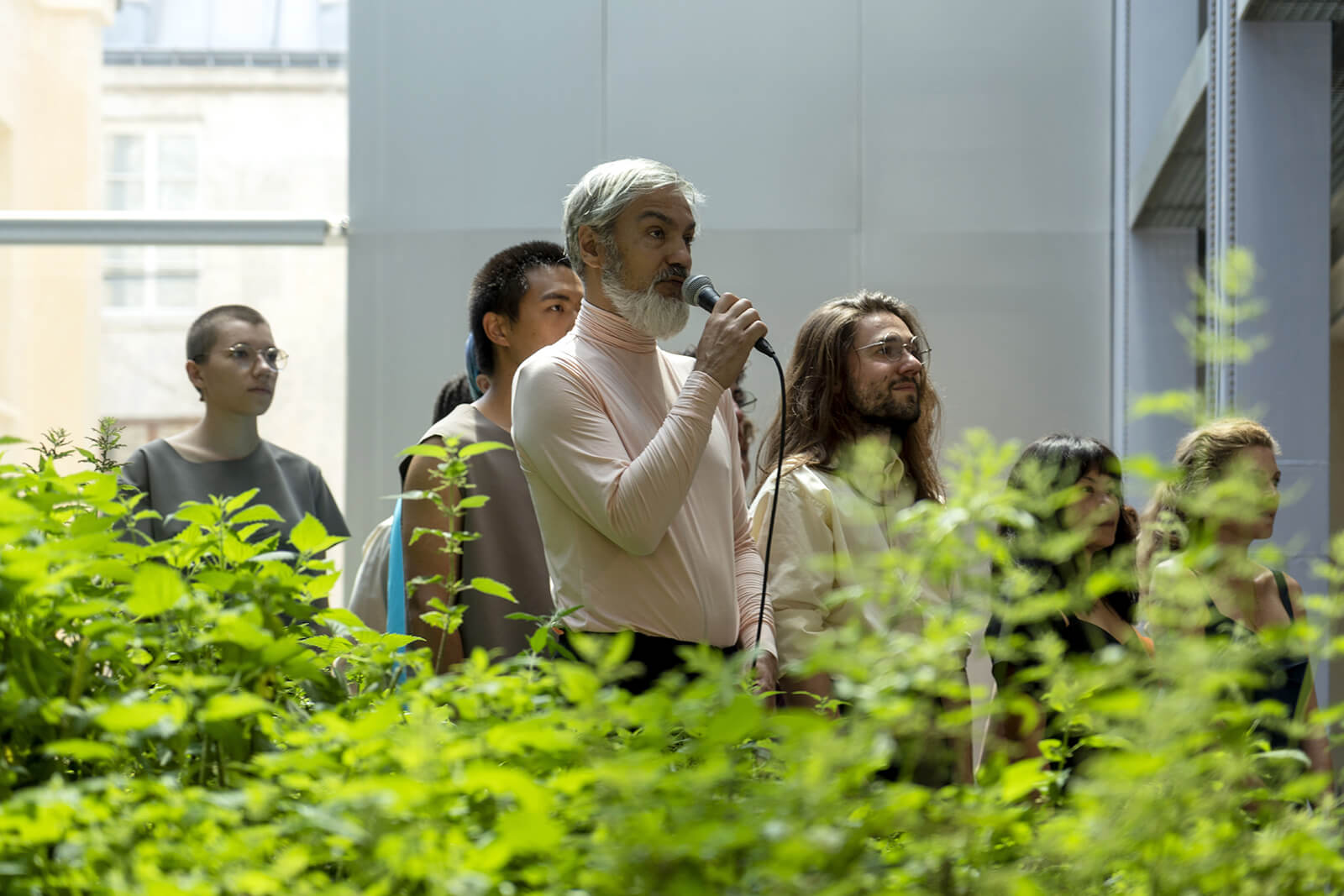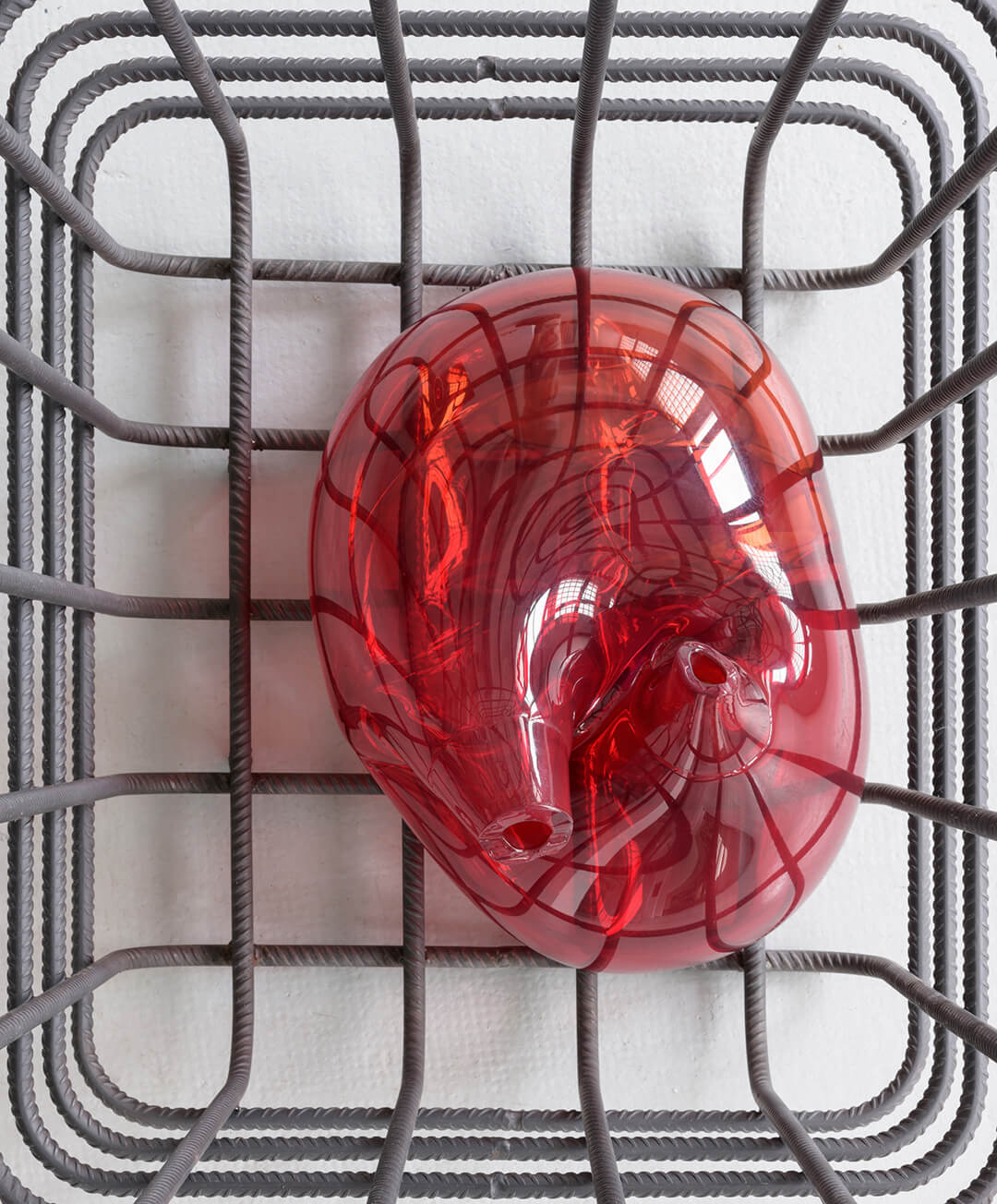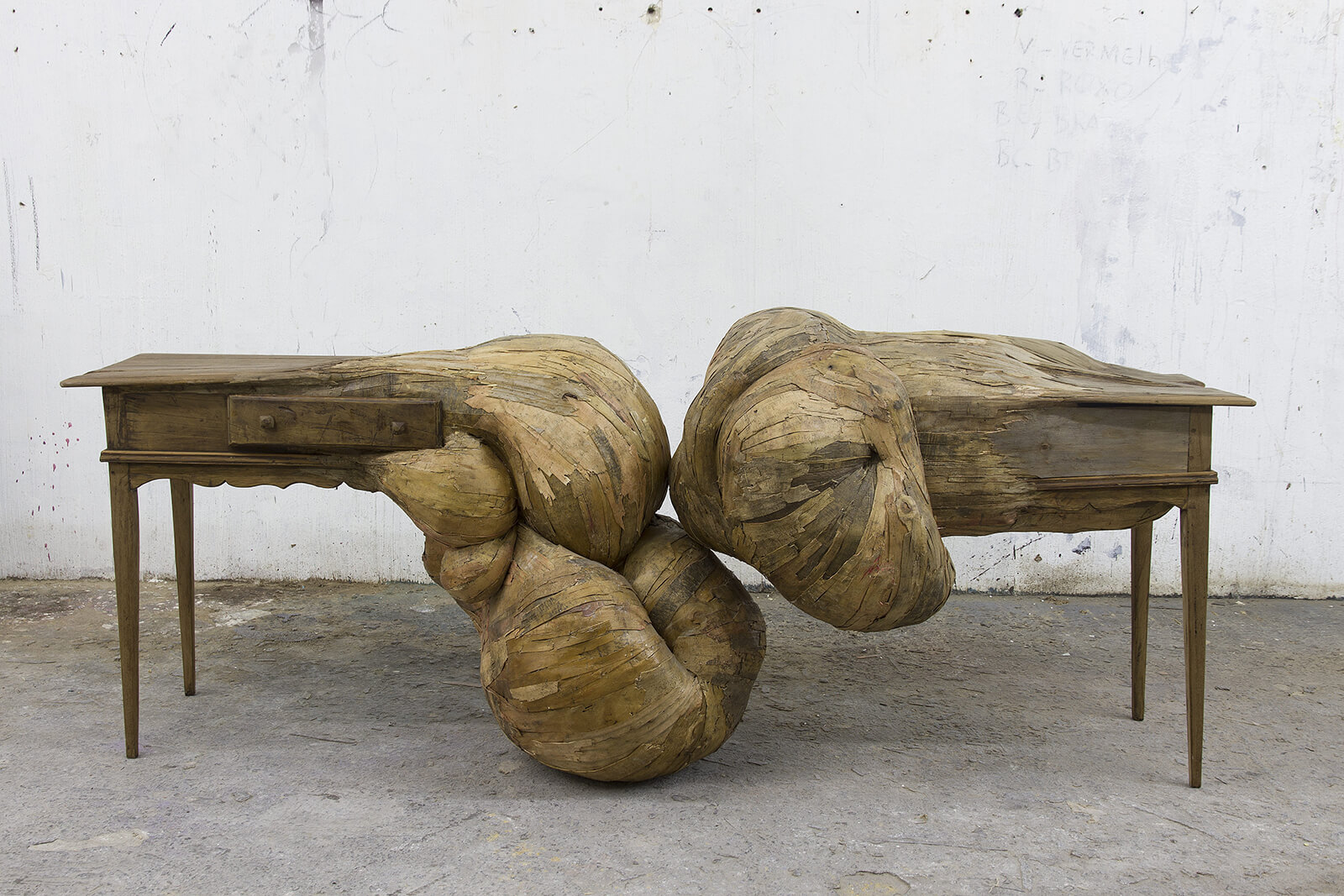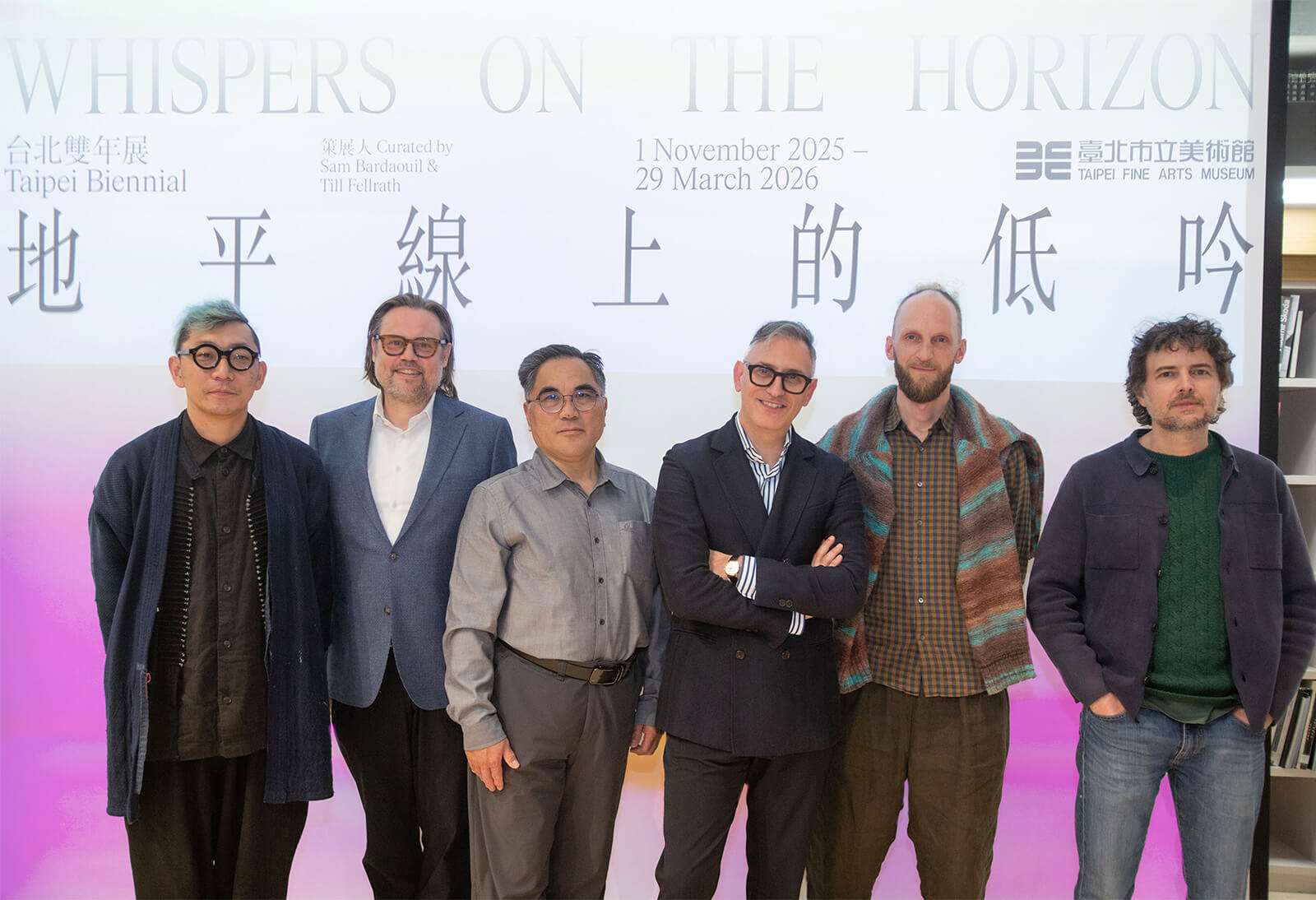In Minor Keys: Venice Biennale 2026 reveals its curatorial theme
by Mrinmayee BhootMay 27, 2025
•make your fridays matter with a well-read weekend
by Ranjana DavePublished on : Oct 03, 2025
What links a puppet, a diary and a bicycle? These three objects form the conceptual core of the 14th Taipei Biennial, Whispers on the Horizon, organised by the Taipei Fine Arts Museum and curated by Sam Bardaouil and Till Fellrath this year. The duo, both directors of Hamburger Bahnhof—National Gallery of Contemporary Art in Berlin, situate their iteration of the biennial in acts of listening: to place, people and history. Their previous curatorial commissions include various national pavilions at the Venice Biennale and the 16th Lyon Biennale in 2022. Bardaouil spoke with STIR about their plans for Taipei, including the intricacies of facilitating a dialogue between 20th century works from the collection of the Taipei Fine Arts Museum and new commissions and invited works at the 2025 biennial.
In practice, it is a space where artists, curators, students, institutions, private patrons, sponsors and public audiences intermingle; where difference doesn’t dissolve but becomes connective; where local histories are amplified toward global reflection — and the global finds renewed purpose through Taiwan’s vantage. – Sam Bardaouil

As co-curators, Bardaouil and Fellrath speak of curating not as projection but as excavation, a practice situated in time, both in the labour it suggests and in the interludes of pause and contemplation it requires. The three objects that signal ‘yearning’ in the context of the biennial bring in local backstories – evoking specific topographies of loss, memory and desire. Taiwan’s fraught political history is coded into this yearning – Bardaouil calls it a “reading room of Asia’s tensions” – with colonisation and territorial contestations feeding into what he describes as “a restless inhabitation of an urgent present”.
Opening on November 1, this year’s edition features 52 artists from 35 cities, with 33 new commissions and site-specific works. Artists presenting at the biennial include Mona Hatoum, Rohini Devasher, Korakrit Arunanondchai, Rana Begum, Christopher Kulendran Thomas and Jacopo Benassi. An edited transcript of STIR’s conversation with Bardaouil below.
Ranjana Dave: How do you approach curatorial practice? Whether you’re curating a biennial or an institutional programme, what are you looking out for or listening for?
Sam Bardaouil: Our methodology always begins from within the institution itself, rather than external platforms: at Hamburger Bahnhof in Berlin, for example, we listen to the architecture, the multivalent histories embedded in walls, galleries and logistics. Curating isn't about projection, but excavation — guiding the institution’s existing capacities while pressing them toward new narratives and connections. In Taipei, our curatorial gesture was to listen to Taiwan’s layered vibrancy — its colonial palimpsests, thriving Indigenous cultures, democratic ruptures, poetic traditions — and then to design a biennial that operates from those inflexions rather than imposing a theme from afar. We’re sensitive not only to what a site can show, but what it might ask us to witness: how the biennial’s openness prepares for new forms.

Ranjana: What does ‘yearning’ mean in the context of Taiwan’s history and society? Why do the three objects that inspire the exhibition matter? Do they offer a sense of geographic and cultural familiarity? Are they conceptual markers?
Sam: [The] three objects for us are a great way of tapping into yearning, [not] as a form of nostalgia but as a condition of suspension. For us, yearning is a restless inhabitation of an urgent present and I think the title tries to express that, because if you're…trying to travel towards the horizon, you never arrive. And that's exactly what yearning is. It's an unresolved drive. We chose the puppet from The Puppetmaster, the diary in My Kid Brother K’ang-hsiung and the bicycle in The Stolen Bicycle not as literal icons but as memory carriers: the puppet—one of Taiwan’s performative heritages; the diary—a personal archive of dissent and grief; the bicycle—a travelling emissary across landscapes, absence, recall.
Each figure is distinct: the puppet gestures toward embodied tradition, the diary toward interior rupture, the bicycle toward generational absence and search. Together, they form a triangular field of the intimate, the historical, the nomadic. Rather than offering an easy sense of place, they become conceptual compasses — guiding us toward a poetics of fracture and possibility.

Ranjana: ‘Yearning’ is emotionally complex but also very abstract — how do you move from yearning as an unresolved notion to a curatorial framework that brings 54 artists from 35 cities together?
Sam: We began not by defining yearning for the artists, but by asking them a deceptively simple question: What do you yearn for? That question opened a space for intimacy and vulnerability, for each artist to respond in their own idiom, whether through memory, fracture, or speculation.
The exhibition architecture mirrors this approach. Rather than enclosing works in rigid thematic sections, we designed a porous environment where textiles — opaque and translucent — create shifting layers of vision. Fabrics printed with gradients echo the horizon itself, filtering light, refracting images and turning artworks and visitors alike into apparitions, shadows, reflections. A sculpture glimpsed through fabric might seem spectral; a projection may dissolve into the folds of another work.
What we proposed was not a curatorial framework of resolution but of listening — to each artist’s yearning, to the institution’s space and to the resonances that emerge when both are allowed to breathe together.
Ranjana: You’re commissioning 33 new works for the biennial. Could you talk through some of them?
Sam: We responded to the architecture of Taipei Fine Arts Museum (TFAM) as much as to the artists themselves. Several of the commissions will be monumental, bridging interior and exterior, echoing the museum’s spatial rhythm. We’re working with filmmakers, sculptors, sound artists and digital performers — nearly half are under 40 — to capture something urgent and current.
For example, Henrique Oliveira will install sprawling plywood root-like forms that rupture gallery floors, making visible subterranean entanglements of care and belonging. Zih-Yan Ciou is creating a cinematic airfield installation with cardboard and projection, folding aviation mythography and national memory. Afra Al Dhaheri is producing a wall-grown braided rope installation that pulses with soft labour, slowing circulation. Ivana Bašić will construct a hammering stone-and-glass piece where rhythm breathes through material fracture. Commissioning is an act of deep listening: to the artists, the place, the potential that isn’t yet visible.
Ranjana: How did you shape the biennial’s interaction with works from TFAM’s collection? What aspects of Taiwan’s history and identity does their inclusion bring in?
Sam: We intentionally placed historical canvases — by Chen Cheng-Po, Chen Chin, Chen Chih-Chi — into dialogue with contemporary works. These are not nostalgic nods, but refractive points: they embody Taiwan’s layered identity and shifting politics. Their brushstrokes signify histories of colonisation, nationalism and contested legitimacy — and when juxtaposed with contemporary yearning, they complicate the idea of belonging, showing yearning as structural and time-coded.

Ranjana: What specific role do you see the Taipei Biennial playing in the Asian arts ecosystem?
Sam: The Taipei Biennial is among Asia’s longest-standing platforms for contemporary art — a site for cross-cultural visibility and experimentation. It’s neither provincial nor universal but situated in rich complexity. As curators, we see it as a reading room of Asia’s tensions — between tradition and transformation, rootedness and rupture — and a place where global poetic practices can meet local urgencies.
In practice, it is a space where artists, curators, students, institutions, private patrons, sponsors and public audiences intermingle; where difference doesn’t dissolve but becomes connective; where local histories are amplified toward global reflection — and the global finds renewed purpose through Taiwan’s vantage.
Ranjana: Having curated in different contexts, in Lyon, Venice, Berlin and now Taipei, has your understanding of what a biennial can do shifted over time? What does a biennial do for its ecology, according to you?
Sam: Our understanding of what a biennial can do has evolved with every context we’ve worked in. A biennial is never just an exhibition; it is an ecology that tests how art can resonate with the pulse of a city and how it can create temporary communities of imagination. In Lyon, the local story of a historically invisible silk weaver became a thread for broader explorations of fragility, with the Biennial activating 14 sites across the city — museums, abandoned factories, public squares — weaving a fabric of intimate and expansive reflection that proved vulnerability can be generative, not sentimental. In Venice, across three national contexts, each pavilion posed urgent questions: the Lebanese Pavilion (2013) deployed collective memory of loss and reconstruction; the UAE Pavilion (2019) framed tradition through speculative futurism; and the France Pavilion (2022) refracted colonial legacy through networks of filmmaking solidarity.
In Taipei, the Biennial is cultivating an atmosphere where art convenes memory, risk meets tradition and horizons remain open — for now and for what comes next. So rather than thinking of a biennial as a single statement, we have come to see it as an atmosphere, a temporary ecology of ideas that lingers beyond its duration. Its impact is not measured only in exhibitions or commissions but in how it reshapes relationships between artists, publics, institutions and histories. What matters most is the capacity of a biennial to leave behind a sense of possibility — a horizon that does not resolve but continues to whisper, asking how we might live, create and imagine otherwise.
The 14th Taipei Biennial 2025, ‘Whispers on the Horizon,’ will run from November 1 - March 29, 2026.
by Srishti Ojha Sep 30, 2025
Fundación La Nave Salinas in Ibiza celebrates its 10th anniversary with an exhibition of newly commissioned contemporary still-life paintings by American artist, Pedro Pedro.
by Deeksha Nath Sep 29, 2025
An exhibition at the Barbican Centre places the 20th century Swiss sculptor in dialogue with the British-Palestinian artist, exploring how displacement, surveillance and violence shape bodies and spaces.
by Hili Perlson Sep 26, 2025
The exhibition at DAS MINSK Kunsthaus unpacks the politics of taste and social memory embedded in the architecture of the former East Germany.
by Mrinmayee Bhoot Sep 25, 2025
At one of the closing ~multilog(ue) sessions, panellists from diverse disciplines discussed modes of resistance to imposed spatial hierarchies.
 surprise me!
surprise me!
make your fridays matter
SUBSCRIBEEnter your details to sign in
Don’t have an account?
Sign upOr you can sign in with
a single account for all
STIR platforms
All your bookmarks will be available across all your devices.
Stay STIRred
Already have an account?
Sign inOr you can sign up with
Tap on things that interests you.
Select the Conversation Category you would like to watch
Please enter your details and click submit.
Enter the 6-digit code sent at
Verification link sent to check your inbox or spam folder to complete sign up process



by Ranjana Dave | Published on : Oct 03, 2025
What do you think?